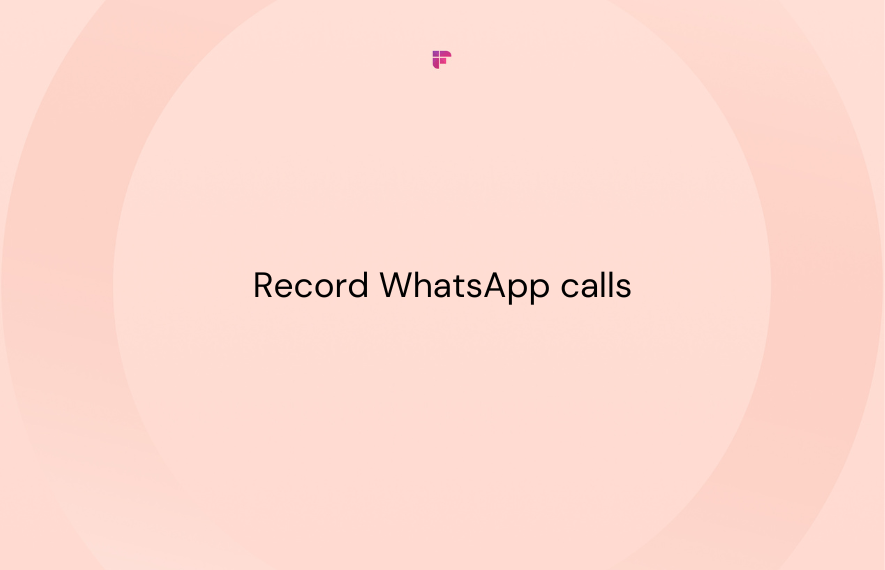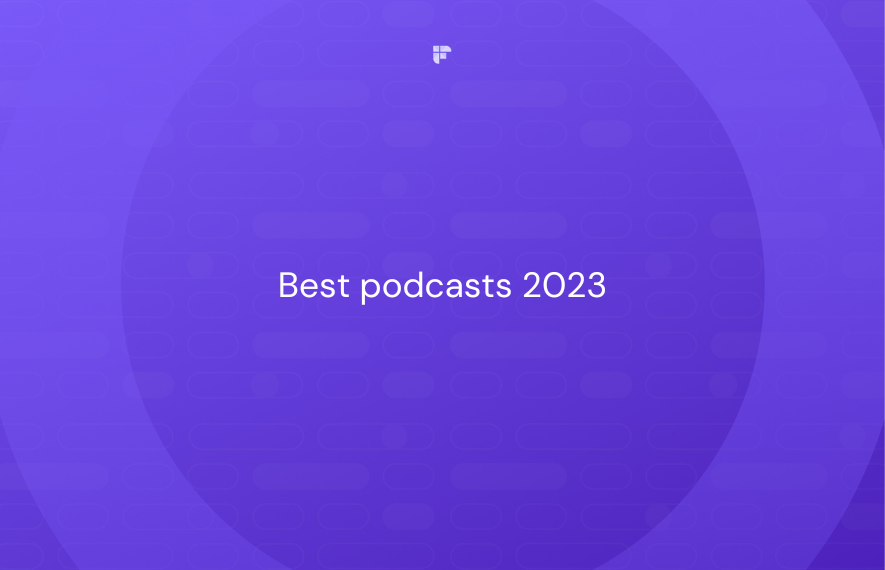Do you know creating podcast transcripts is one of the easiest ways to make your audio content more accessible and searchable and can attract a wider audience?
However, podcasters often consider this laborious and skip it. But the fact is, with the right approach, it’s quite simple.
In this blog, we'll take you through different ways of creating your podcast transcripts, their pros and cons, the answers to the most intriguing doubts about podcasts, and more.
So whether you're a podcast fan, a content creator, or someone looking to enhance your listening experience, this is for you!
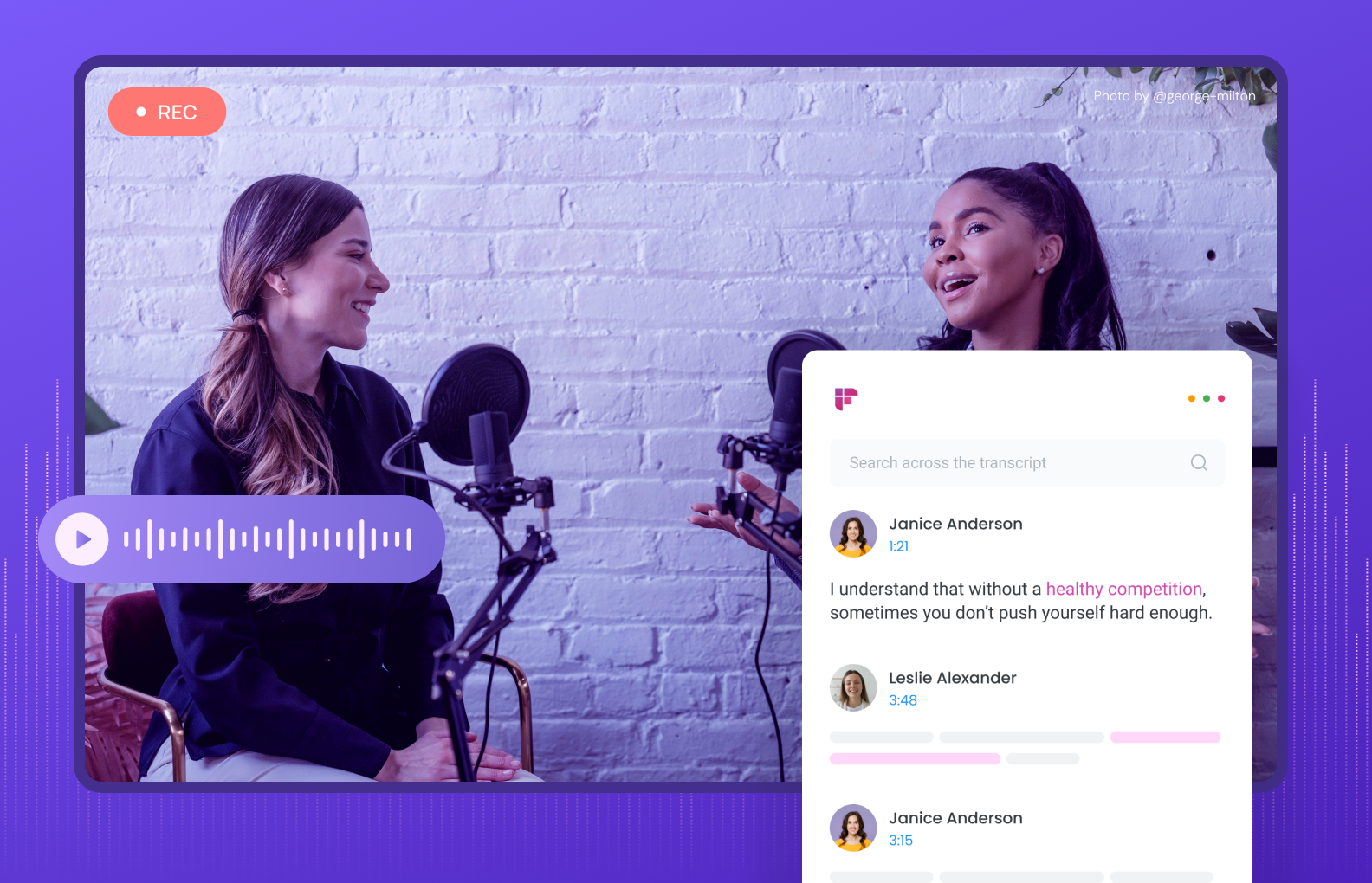
How to create podcast transcripts?
Podcasts are becoming increasingly popular and hence the competition to rank number one. So how to make your content stand out from the crowd? Simple: use podcast transcripts.
Add transcripts to your podcasts, making them more visible, accessible, and appealing. A transcribed podcast has several advantages, such as:
- Accessibility: The content is accessible to people with difficulty following audio content.
- Expanded audience: Adding podcast transcripts can help reach a wider audience, including those who prefer to read rather than listen.
- Repurposing content: You can repurpose transcripts into blog posts, social media content, or even a book.
- Show notes: Transcripts can serve as the basis for creating show notes, making it easier for listeners to find relevant information about each episode.
- Content planning: Transcripts can be a valuable tool for planning future episodes, as they allow you to review and analyze the content of previous episodes and identify areas for improvement or further exploration.
3 Easy ways to create podcast transcripts
Creating podcast transcripts doesn't have to be a tedious task. Here are three easy and efficient ways to do it:
1. Collaborate with a professional transcription service provider
2. Create podcast transcripts manually
3. Create transcripts using AI tools

Collaborate with a professional transcription service provider
Hiring a professional transcription service provider is one of the best options if you’re looking for high-quality, customized output.
Here’s how to get the transcript of a podcast using this method:
- Search and find your transcriber
- Connect with the service providers
- Share your audio file
- Review and edit the transcript
- Finalize the transcript
1. Search and find your transcriber
Firstly, create a list of reputable podcast transcription providers. You can find them via freelance platforms like Upwork, Fiverr, or LinkedIn.
Once the list is ready, research and compare your options to find one that fits your needs and budget—shortlist at least two and up to four transcribers.
2. Connect with the service providers
Get in touch with the person and start discussing possibilities of collaboration.
Once you have the conversation with everyone on your list, decide and finalize the one that best fits you—consider trust, rapport, and budget. Whoever you choose, know the terms and conditions from the start.
3. Share your audio file
Once you finalize and sign the deal, share the audio file of your podcast episode with the transcriber. Also, make sure to communicate any specific instructions or formatting requirements.
The transcriber will listen to the audio file and create a podcast transcript. Depending on the episode's length and the content's complexity, this process may take a few hours to days.
4. Review and edit the transcript
Once you receive the podcast transcript, review it carefully for its accuracy. If necessary, make any edits or corrections.
5. Finalize the transcript
Once finalized, use the transcript to enhance your podcast content. For example, add it to your show notes or post it on your website.
Collaborating with a professional transcription service provider has advantages and disadvantages. Before going forward with this option, here are some pros and cons you should know:
Pros
- Saves your time
- Guaranteed quality
- Highly customizable transcription
1. Saves your time
When you hire a transcriber to work with you, you’re ideally unloading the work to that person, saving you time and allowing you to focus on content rather than the groundwork.
2. Guaranteed quality
Professional transcribers have the skills and expertise to create accurate, high-quality transcripts that meet not just your needs, but also the SEO requirements.
3. Highly customizable transcription
The customization possibilities are limitless when using the service of a transcriber. They have the skill and expertise to suggest options and work on your customized demands.
Cons
- Highly expensive
- High-risk factor
- High turnaround time
1. Highly expensive
Hiring a professional podcast transcription service provider is often more expensive than other options—DIY or automated transcription tools.
It can cost around $150-$300, depending on the length and complexity of your podcast.
2. High-risk factors
Working with a transcription service provider means you're entrusting someone else with the task of transcribing your content, and you’ll have to share the file before publishing it.
3. High turnaround time
Depending on the provider and the length and complexity of your audio file, the turnaround time to get the final draft will vary, which might also affect your airing time.
Create podcast transcripts manually
Creating podcast transcripts yourself can be a great option if you're on a budget or want complete control over the final product.
Here are the steps you need to follow:
- Listen to the podcast episode
- Format the transcript document
- Start transcribing
- Edit and proofread
- Finalize the transcript
1. Listen to the podcast episode
Start the process by listening to the podcast episode carefully. Take notes on key points, quotes, and timestamps.
2. Format the transcript document
Once you’ve written the notes, set up a Word document or another text editor and format the transcript by adding headings, speaker names, and timestamps.
3. Start transcribing
Now, you can begin transcribing the podcast episode. Type out the spoken words and note other important details, such as music or sound effects. You can also use the in-built dictation tool in Microsoft Word.
4. Edit and proofread
After you've completed the initial transcription, edit and proofread the transcript carefully to ensure accuracy and readability. Check for spelling, grammar, and punctuation errors.
You may use online tools like Grammarly for this.
5. Finalize the transcript
And that’s it. Finalize your transcript and use it to enhance your podcast content by adding it to your show notes or posting it on your website.
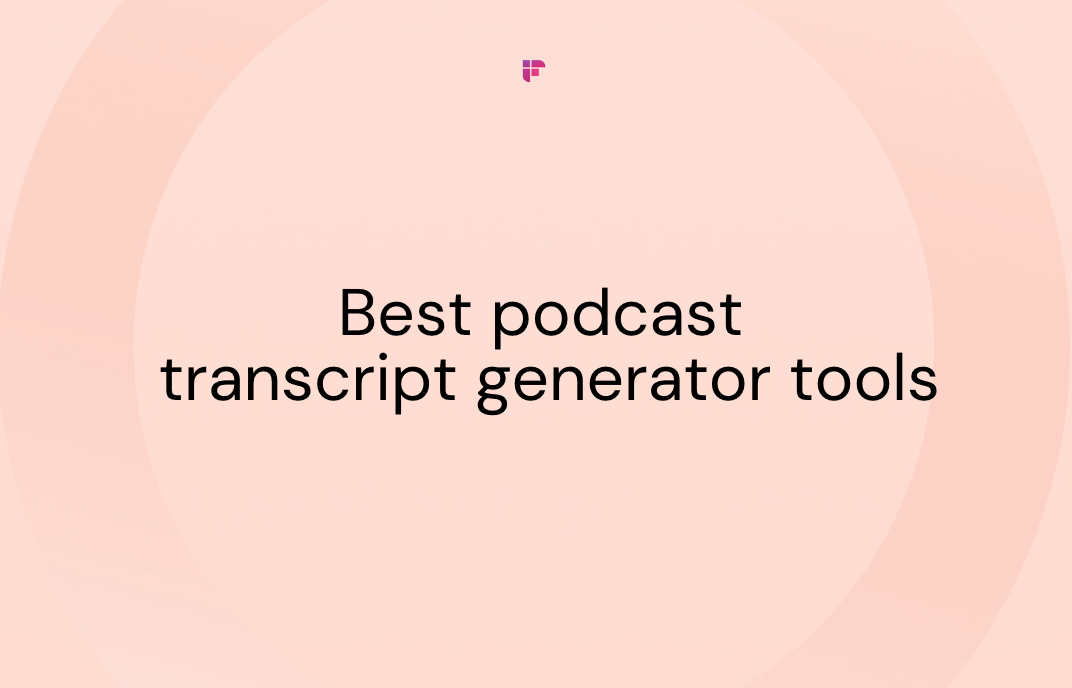
Here are the pros and cons of manually creating podcast transcripts:
Pros
- High control and security
- Highly cost-effective
- Accuracy
1. High control and security
By manually transcribing your podcast episodes, you have complete control over the final product, including the transcript’s formatting, accuracy, and tone.
Your transcripts are secure and confidential since you don’t have to share the file with anyone or anywhere.
2. Highly cost-effective
Manual transcriptions are highly cost-effective, almost a nil in your bill. It only demands time, dedication, and patience to generate a great output (which is a big deal, indeed!).
3. Accuracy
Manual transcription can often produce more accurate transcripts than automatic transcription software, as you can catch nuances in the spoken language that may be missed otherwise.
Cons
- Tedious and time-consuming
- Demand typing skills
- Can cause fatigue and burnout
1. Tedious and time-consuming
Manually transcribing podcast episodes can be time-consuming, especially for longer episodes, and can take up much of your time.
Even a 2-minute video can take around 3-4 hours, depending on your typing speed.
2. Demand typing skills
Transcribing requires a certain skill level, including fast and accurate typing and listening carefully to what’s being said.
If you’re not an expert, creating podcast transcripts might wear you off.
3. Can cause fatigue and burnout
Podcast transcription demands a long period of dedication which can cause fatigue and burnout, leading to errors and decreased accuracy in the final product.
Create transcripts using AI tools
Of all the three methods, using automated tools can be considered the fastest and most efficient way of creating a podcast transcript.
Here’s how to get a transcript of a podcast using automated tools:
- Choose a reliable automated transcription tool
- Upload your podcast audio file
- Choose your transcription settings
- Review, format, and finalize the transcript
1. Choose a reliable automated transcription tool
There exists a zillion transcription tools online. Thus it becomes of utmost importance to choose one that is accurate and reliable—similar to selecting a professional transcriber.
Create a list of tools you’d like to use, compare the pros and cons, and pick the one that appeals the most to you. Some tools have free trials that you can use before deciding on the winner.
💡 Fireflies Tip
You can use Fireflies to transcribe and summarize your podcast accurately. Fireflies provides 90% accurate transcription, is secure, and lets you transcribe audio or video files in 7 languages.
2. Upload your podcast audio file
Once you've chosen your transcription tool, upload the audio file of your podcast to the platform. Most tools accept various file formats, such as MP3, WAV, or AIFF. Make sure you upload the file in the right format.
3. Choose your transcription settings
Once the upload is complete, customize your transcription settings depending on your needs and the tool’s workflow.
You can include speaker identification, timestamps, or punctuation.
Once done, start transcribing!
4. Review and format the transcript
After you receive the transcription, review and edit it to ensure accuracy. Automated transcription tools may make mistakes, especially with names, technical terms, or accents.
Also, depending on how you plan to use the transcript, you may need to format it.
For example, if you plan to publish the transcript on your website, include headings, subheadings, or bullet points to make it easier to read.
Once done, your podcast transcripts are ready to be uploaded and go viral. Happy podcasting!

Like all other methods, this also has its pros and cons. Here are those:
Pros
- Fastest transcription method
- Less expensive
- Doesn’t demand any prerequisite knowledge
- Demands the least effort
- High scalability
1. Fastest transcription method
Automated tools can create podcast transcripts faster than any other medium, saving time.
2. Less expensive
Compared to the expenses incurred while hiring a professional transcriber, the cost of creating podcast transcriptions using automated tools are almost nil. (except when you’re doing it by method 2).
3. Doesn’t demand any prerequisite knowledge
Most AI transcription software solutions are easy to use and don’t require any training or learning hours.
4. Demands the least effort
Other than the initial effort of finding the right tool and minor formatting needs, automated tools demand the least user effort to create podcast transcripts.
5. High scalability
Automated transcription tools can easily scale to handle large volumes of content, making them ideal for people with high transcription needs.
Cons
- Lack of accuracy
- Demands manual interventions in editing and formatting
- Doesn’t capture the context of a conversation
1. Lack of accuracy
Automated tools may need help with certain accents, background noise, or speech impediments, resulting in inaccurate transcriptions.
2. Demands manual interventions in editing and formatting
Transcripts produced by automated tools still require editing to correct errors, which can be time-consuming.
3. Doesn’t capture the context of a conversation
Like any other AI or over-the-web tools, automated transcription tools also have their limits in understanding the context or nuances of a conversation.
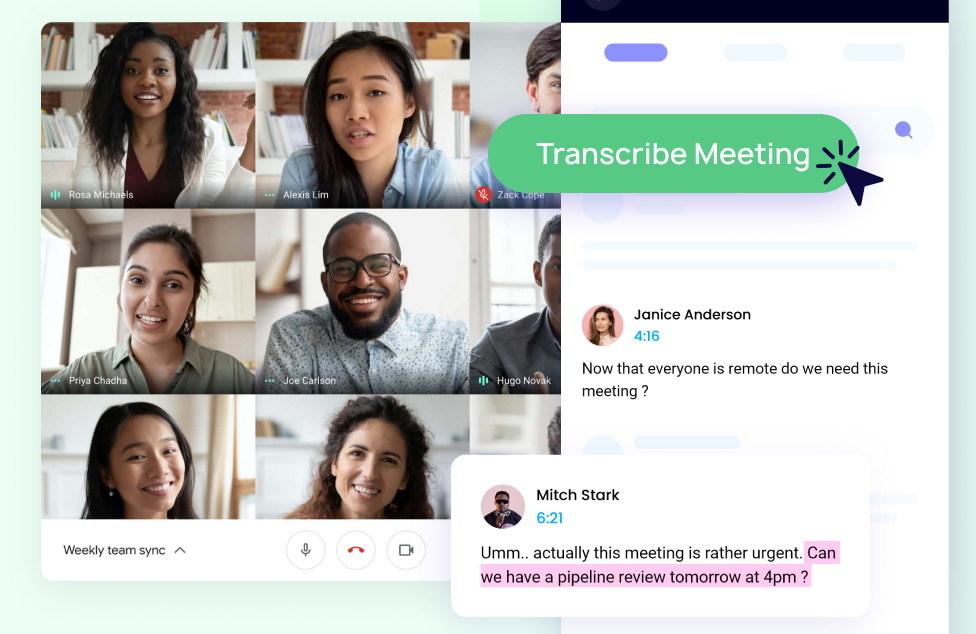
How to create podcast transcripts with Fireflies
Now you know all three methods to create podcast transcripts, there’s one simple way to get podcast transcripts in just minutes—Fireflies.ai.
Here's the step-by-step guide on how to create podcast transcripts using Fireflies:
Step 1: Log into your Fireflies account

Step 2: Once on the Fireflies dashboard, navigate to the Uploads section in the left navigation menu. Alternatively, you can click Upload an Audio File on the bottom right.

Step 3: Browse the podcast audio file you want to upload and click Open.
Step 4: Fireflies will transcribe your podcast once the file is uploaded. Transcribing the audio usually takes 10-15 minutes, depending on the file size.
Step 5: Once Fireflies has processed the audio, you'll get an email notification with the link to the transcription.
This will also be available on your Fireflies Notebook, where you can edit, search, share, and download your transcript.

You can also find the podcast transcript in the Uploads section.

4 reasons why you should use Fireflies for transcribing podcasts
1) Fireflies is accurate: Fireflies is more accurate than other automated transcription software, with 90% accuracy.
2) Fireflies is secure: Fireflies is GDPR and SOC 2 Type II compliant.
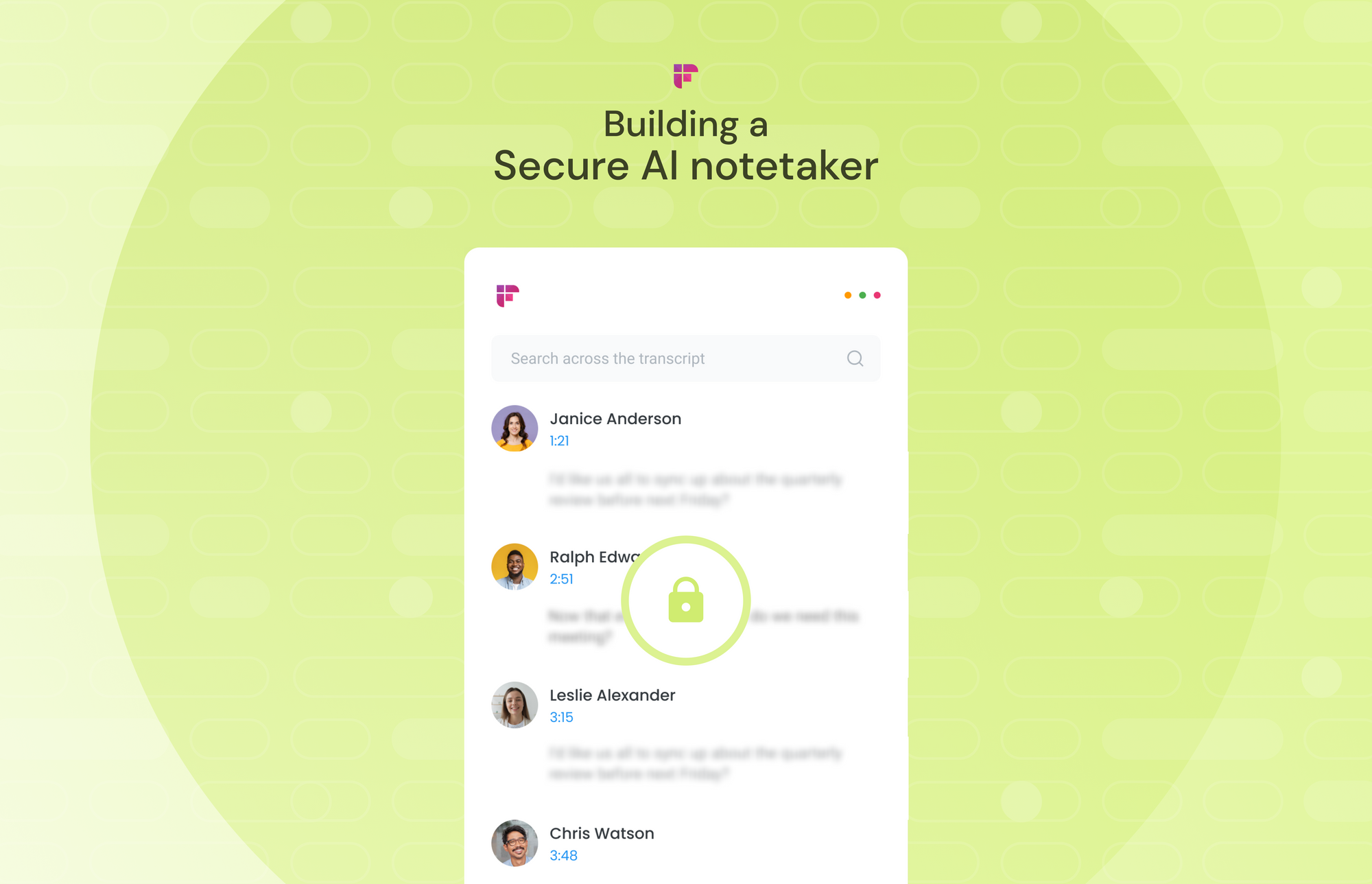
3) Export files in different formats: Fireflies lets you export transcripts in different formats, including DOCX, PDF, SRT, CSV, and JSON. You can download the transcripts with or without timestamps.
4) Other collaboration features: Fireflies helps collaborate more efficiently on scripts–enabling you to leave feedback on specific parts of your recordings and pin important sections for your team to review.
FAQs podcast transcripts
Q. What is the typical format of a podcast transcript?
A: The format of a podcast transcript can vary, but it typically includes a timestamp, speaker identification, and a transcription of the spoken words.
Example:
[00:00:00] Introduction music
Ross: Welcome to the ABC Podcast, where we talk about the latest trends in technology and innovation. I'm your host, Ross.
Joey: And I'm your co-host, John.
[00:00:10] Ross: Today, we will discuss the impact of adding transcriptions to podcasts.
Joey: That's a hot topic right now. It can, in fact, improve the reachability and SEO efforts of podcasts. But how to get a transcript of a podcast?
[00:00:25] Ross: That's a great question. Fireflies.ai is an AI notetaker app you can use to accurately create a podcast's transcripts within minutes.
Joey: That’s amazing. How do you use that tool?
[00:00:45] Ross: That’s extremely simple. Sign up, upload your audio file, and just wait. You will directly get the transcript in your email inbox, Joey. That too within just minutes!
Joey: Super cool. It just solved the need of the hour for podcasters like us. How much does it cost?
[00:00:57] Ross: There are 3 different pricing models from 0 to $19 monthly charges. It charges only $10 per seat a month for unlimited transcriptions.
Joey: That’s amazing, I’ll try it today itself!
[00:01:05] Outro music
[00:01:10] End of transcript

Q. How can podcast transcripts benefit people who speak languages other than English?
A: Podcast transcripts can be translated into other languages to make the content more accessible to non-native English speakers. They can also help people learn English by providing written content to complement the spoken words.
Q. Can podcast transcripts be used as closed captions?
A: Yes, podcast transcripts can be used as closed captions to provide subtitles for the audio content.
Q. Are podcast transcripts required by law for accessibility purposes?
A: The Americans with Disabilities Act (ADA) does not explicitly require podcast transcripts but requires that all public-facing content be accessible to people with special needs. Providing transcripts can help make your content more accessible and avoid potential legal issues.
Q. How accurate are human-generated podcast transcripts compared to automated ones?
A: Human-generated podcast transcripts are generally more accurate than automated ones, especially for more complex content or poor-quality recordings. However, they are also more expensive and time-consuming.
If you can’t find the answer you’re looking for here, feel free to reach out to us at support@fireflies.ai
Final thoughts
Podcast transcripts are a great way to make your content accessible, appealing, and optimized for search engines. Think of it like adding sprinkles to your ice cream—it may seem like a small detail, but it adds an extra layer of flavor, fun, and visual appeal.
You can create transcriptions of a podcast in multiple ways, and we’ve given the steps, pros, and cons of each.
So, pick the one that fits best for you, put on your favorite podcast, grab a cup of coffee, and transcribe your way to podcast stardom. Happy transcribing!









